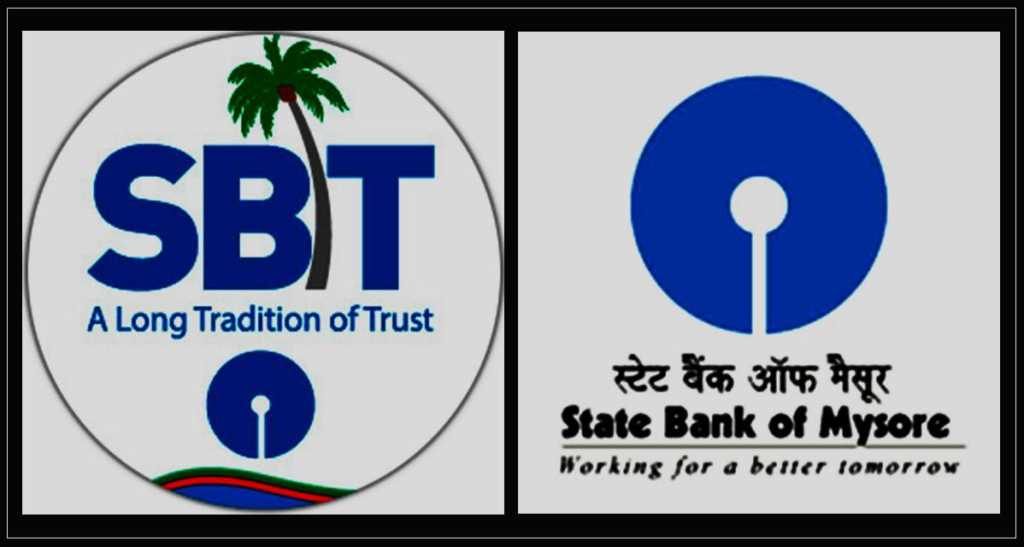In pre-independent India, there were many princely states. Some were governed excellently and some were governed poorly. Some rulers were visionaries and some were downright tyrants. There were two princely states in India that were excellently administered. The rulers were visionaries and genuinely cared for their people. Both were located in the southern part of the country and have left behind a huge part of their legacy. Their contributions will always be remembered. However, two of their great contributions have now come to a close. Today, April 1, 2017 marks the end of State Bank of Mysore and State Bank of Travancore, which were founded by the great princely states of Mysore and Travancore respectively.
In June 2016, the Union cabinet approved the plan to merge the 5 associate banks of the State Bank of India, namely Mysore, Travancore, Hyderabad, Bikaner and Jaipur, and Patiala into its parent body, i.e. the State Bank of India. The move will make the State Bank of India among the 50 largest banks in the world and has been necessitated after years of redundancy, poor performance, and capital adequacy issues in the associate banks of the SBI.
However, among these 5 associate banks, at least two of them were more than just a bank for the people where these banks were prominent.
To the people of Karnataka, State Bank of Mysore was not just a bank. It was affectionately called as Mysore Bank or namma bank, meaning our bank because it was started by the legendary Sir M Visvesvaraya. Similarly, State Bank of Travancore was not just a bank to the people of Kerala.
SBIT was called Kerala’s own bank and the state postal department has issued a stamp in its honour on the occasion of the merger. Why were these two banks so special and why do they hold a sentimental value?
It is all because of the visionary rulers of the erstwhile princely states of Mysore and Travancore. The kings of both the princely states were visionaries. It was their vision which led to the creation of the two banks. Interestingly, the two kings who oversaw the creation of the two banks had similar personalities. Both Maharaja Krishna Raja Wadiyar-IV of Mysore and Maharajah Chithira Thirunal Balarama Varma of Travancore initiated a lot of reforms in the social, political, and educational sectors. Both of them were praised by Mahatma Gandhi, who called Krishna Raja Wadiyar as Rajarishi and likened his reign to be similar to Rama Rajya. He wrote a letter to Balarama Varma wherein he said that rather than him being called as Mahatma, the Maharaja of Travancore deserved to be called as Mahatma for making Travancore the first princely state in India to abolish untouchability and allow the dalits into the temples across the kingdom.
Both the kings were guided by two equally visionary Diwans who actually were responsible for the creation of the two banks. Sir M Visvesvaraya and Sir CP Ramaswamy Aiyar were the Diwans of Mysore and Travancore at that time. Sir M Visvesvaraya was the Diwan of Mysore from 1912 to 1919 and his reign was truly remarkable in the history of Mysore. His contributions had such an impact and his legacy is so large that he is literally worshiped by people across Karnataka. Mysore Bank was his creation and it was on the recommendation of the banking committee, of which he was the chairman that Krishna Raja Wadiyar became the patron of the new bank in 1913, which was named as The Bank of Mysore Ltd. In 1953, it became an agent of the Reserve Bank of India and in 1960; it became a subsidiary of the State Bank of India under the State Bank of India Act of 1959.
As of December 2016, it had a workforce consisting of more than 10,000 employees, 3600 supervisory staff, and more than 6,000 non-supervisory staff and the bank had made a business of ₹1.33 lakh crore. For his innumerable contributions, Sir MV was awarded with the Bharat Ratna in 1955. He is widely known as the Father of Modern Mysore State, which is now known as Karnataka. It is due to his and Krishna Raja Wadiyar’s association with the Mysore Bank that the bank had such a sentimental value with the people of Karnataka and now after 104 years, it is truly the end of a memorable era.
Similarly, the Travancore Bank was the creation of Sir CP Ramaswami Aiyar. However, due to his controversial term as the Diwan of Travancore, the bank has always credited the Maharaja of Travancore, Chithira Thirunal Balarama Varma as its founder. It was established as Travancore Bank Ltd in 1945. The Travancore government had put 25% of the capital and the bank generated the rest of the capital through government treasury work and foreign exchange. Between 1959 and 1965, it acquired various banks across Kerala and became the premier bank of Kerala. It became a subsidiary of the SBI in 1960 again, due to the State Bank of India Act of 1959.
As of December 2016, the bank had a total of 14,000 employees working in its 1,157 branches across 18 states and 3 union territories. It was the premier bank of Kerala for 72 long years and due to this fact and also because of its association with the princely state of Travancore, it was called as Kerala’s own bank and had a special place in the hearts of all Keralites. It is the end of a memorable era.
From today, there won’t be a State Bank of Mysore or a State Bank of Travancore. But they served the people for a very long time, Mysore for 104 years and Travancore for 72 years. Their merger with the SBI is expected to be the good for the country and was described as a win-win situation by the Chairperson of the SBI, Arundhati Bhattacharya. But it is now time to say farewell to the 5 associate banks of the SBI.
